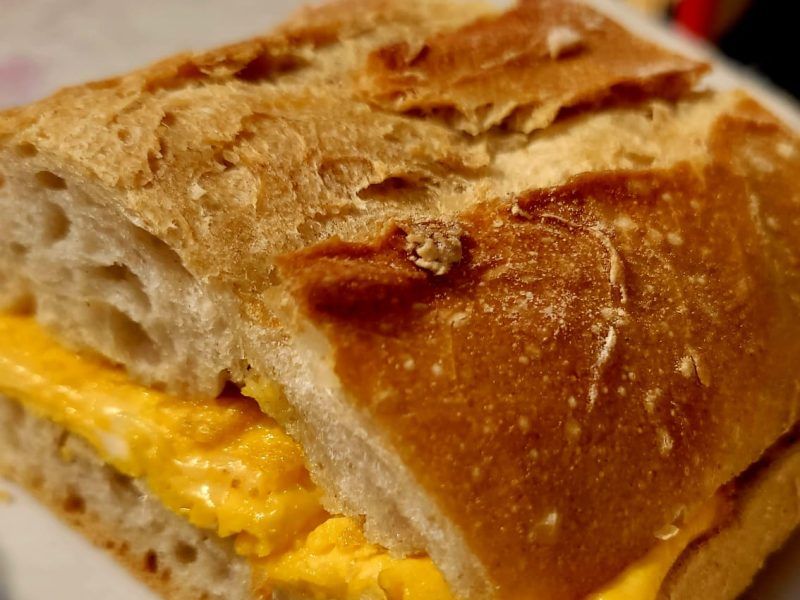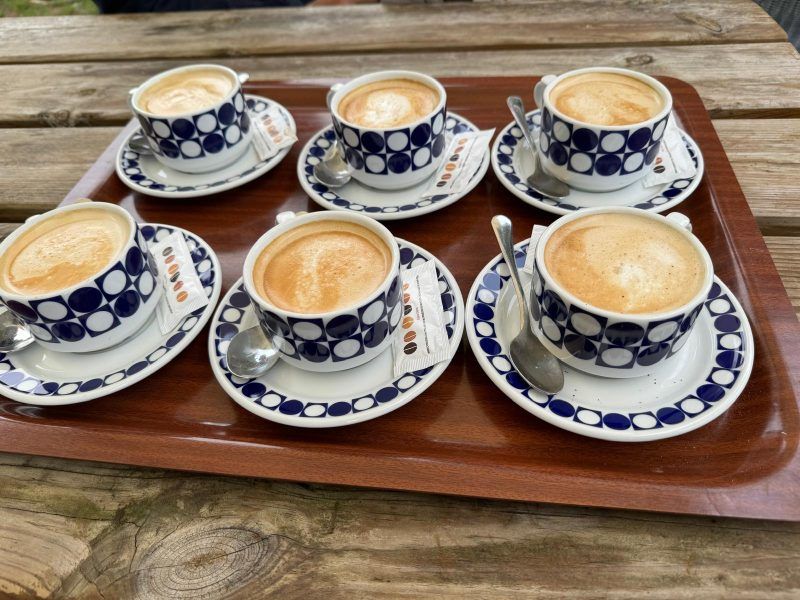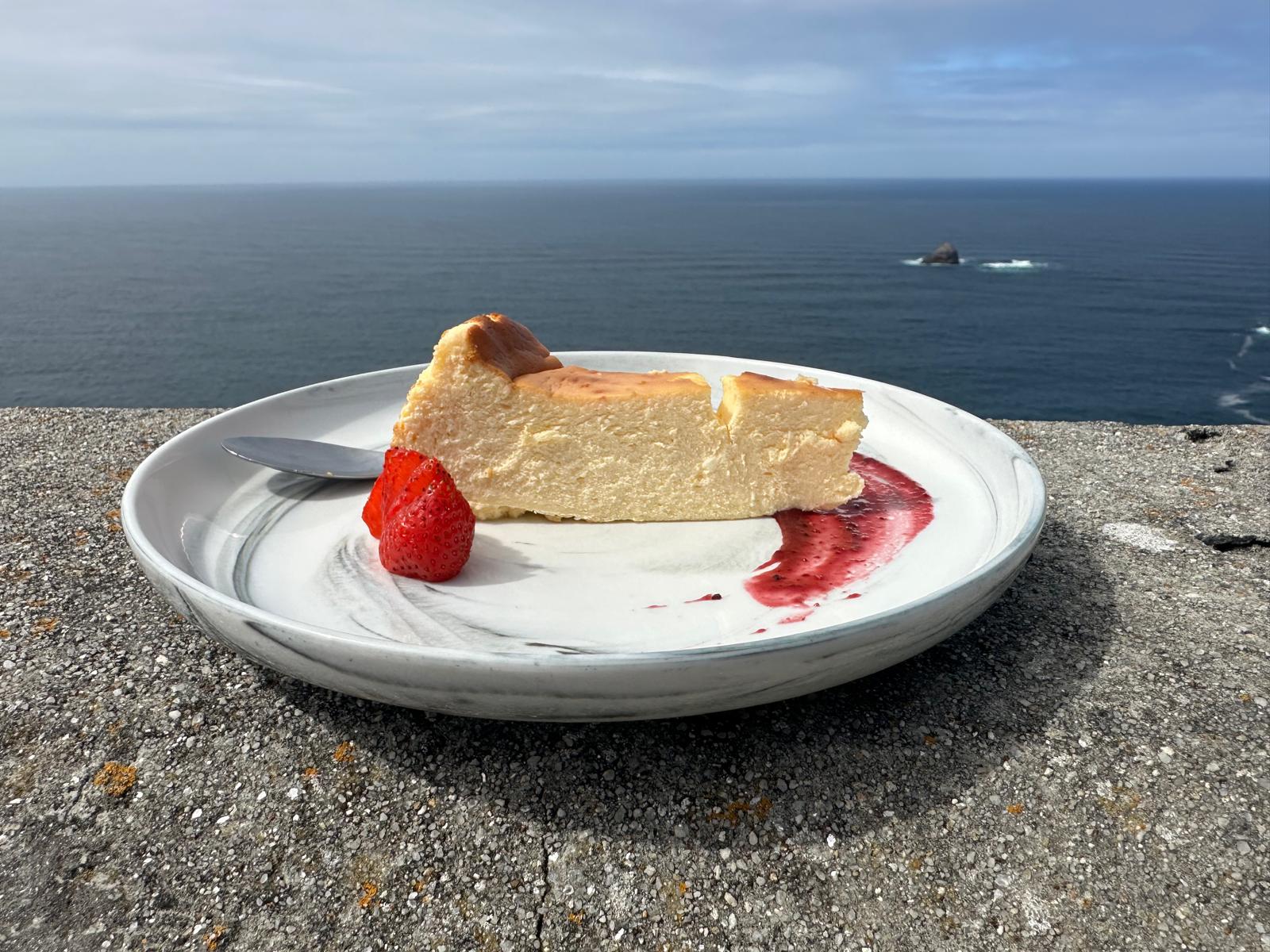Breakfasts in Spain are something a lot of our travelers ask about, and it makes sense! When you start a walking holiday, the first meal of the day feels important. Spanish breakfasts say a lot about the local lifestyle. People don’t rush into the day with heavy food, they keep it simple and save their appetite for later meals. For visitors, this means that breakfasts in Spain can feel unusual at first. But once you get used to it, you might actually enjoy how unhurried and straightforward it feels. It is less about filling your plate and more about joining the rhythm of local life, and that can be a surprisingly lovely start to the day. So if you are expecting eggs, bacon and a buffet, Spain might surprise you! Breakfast here is usually something quick and light, more about fueling up with coffee than sitting down for a morning feast. Of course, you can find international options in hotels, but the everyday Spanish way is very different. Keep on reading to learn more about breakfasts in Spain! One of the first things you’ll notice about breakfasts in Spain is how light they are. A typical morning starts with coffee, usually café con leche, and something small to eat alongside it. Toast with tomato and olive oil, called pan con tomate, is a classic choice. Pastries are also popular, from a simple croissant to a sugar-dusted napolitana. Fresh orange juice is another favorite, especially in areas where citrus groves are part of the landscape. Spanish breakfasts are not meant to be heavy or filling. They are a small moment of pause before the real meals of the day begin, and they often reflect the rhythm of local life. You will also notice differences across regions, many of which line up with the well-known Camino routes. In Galicia, at the end of the Camino Francés, you are likely to find rustic bread, cheese and sometimes even a slice of empanada to start the day. Along the Camino del Norte, coastal towns often serve fresh pastries with butter or honey, sometimes accompanied by a glass of natural apple juice. In León, a favorite stop and one of our starting points for both walking and e-bike trips on the Camino Francés, churros dipped in thick hot chocolate are a traditional morning indulgence. Each region adds its own flavor, shaped by local produce and traditions, yet the style remains simple and never overwhelming. But wherever you go, breakfast is not about piling your plate high. It is about enjoying a small bite, sipping your coffee and stepping into the local rhythm before the rest of the day unfolds. Travelers from Northern Europe often imagine starting the day with a hearty buffet. In the Netherlands and Germany, breakfast usually means a long table covered with bread rolls, sliced meats, cheese, boiled eggs, muesli, fruit and sometimes even hot dishes. It is a proper meal that keeps you going for hours. By contrast, breakfasts in Spain look very different. In a local café or guesthouse you are unlikely to find such variety. Instead of a spread of cold cuts and cheese, you will usually be served coffee, toast or a pastry and perhaps a glass of fresh juice. Spanish breakfasts are lighter, and that can feel unusual if you are used to a Northern European start to the day. On WAW trips, you can always count on breakfast being included at your accommodation, but it is good to adjust your expectations. If you prefer something closer to the Dutch or German style, you might want to pick up some fruit, yogurt or nuts from a local shop the day before to add to your morning meal.
Many cafés in Spain don’t even open until eight or nine in the morning. For travelers who like to eat early and head out quickly, this can be surprising. If you know you want to start walking before then, it is a good idea to buy some fruit, yogurt or snacks the night before so you can have something ready. This later rhythm has everything to do with the way Spanish mealtimes are structured. Since dinners are served late in the evening, mornings naturally shift as well. For locals, Spanish breakfasts are not a sit-down event at home but usually a quick stop at a café once the day is already underway. Coffee is often enjoyed standing at the counter, maybe with toast or a sweet pastry, before heading off to work. This is why breakfasts in Spain are not just lighter than Northern European ones, they are also woven into a daily routine that runs on a later clock. When you travel with WAW.travel, breakfast is always included at your accommodation, but don’t expect a huge buffet. Instead, you will usually sit down to a very local start to the day. A typical spread might be toast with butter and jam, pan con tomate with olive oil and tomato, and of course coffee or tea. Sometimes there is fresh juice or a small pastry, depending on the region. The fun part is that each Camino region has its own touch. On the Camino Primitivo, rustic mountain bread and local cheese are often served, reflecting the rural character of Asturias. Along the Camino Inglés, you may find hearty Galician bread with butter or honey, perfect for a short but steep route. Walking the Camino Sanabrés, it is common to see homemade jams or regional pastries on the table, offering a taste of the countryside. These small details connect you to the landscape you are walking through and make every morning feel authentic. We choose to follow the local style because it is part of the cultural experience. Rather than creating a standardized buffet, we want you to taste the rhythm of everyday life. And while breakfasts in Spain may be lighter than what you are used to, they are also a window into the way people live here. Not everyone finds it easy to start the day with just coffee and toast. If you prefer something more substantial, there are simple ways to adapt. Bring a few snacks in your daypack, pick up fruit, yogurt, breads or spreads from a local shop in the village, or look around for a supermarket when you pass through a bigger town. You can also ask your guide which cafés along the way are good for a second stop. Remember, part of the adventure is learning to go with the flow. Spanish breakfasts may be lighter than what you are used to, but with a little planning you will still have all the energy you need for the walk ahead. And don’t forget that the lighter mornings are balanced out later in the day. Spanish cuisine really shines at lunch and dinner, when plates are hearty, full of flavor, and often shared. From a simple menú del día with soup, salad and a main course to tapas enjoyed in a bustling bar, food is never lacking in Spain. Starting light in the morning simply leaves room to fully enjoy these meals later in the day. On the Camino, this rhythm becomes even more meaningful. Many pilgrims finish walking around lunchtime, which is the perfect moment to sit down and enjoy a generous Spanish meal. In Galicia you might find pulpo a la gallega, tender octopus with paprika and olive oil. Along the Camino del Norte, fish and seafood are often the stars. And no matter where you are, the pilgrim menu offered in the evening is a reliable way to refuel after a long day on the trail. Knowing that breakfasts in Spain are lighter makes it easier to embrace this balance and appreciate the food culture as a whole. Walking the Camino means stepping into a different rhythm of life. Mornings are lighter and slower, and breakfast is more about coffee and a small bite than a full meal. Instead of seeing this as a challenge, think of it as part of the adventure. If you do want a little extra energy, it is easy to adapt. Pop into a bakery for fresh bread, pick up some fruit or yogurt from a shop, or carry a simple snack like nuts or a cereal bar in your pack. These small adjustments will keep you fueled until the next café or lunch stop. Most of all, enjoy the experience for what it is. Spanish breakfasts may be simple, but they are a doorway into local life, and once you embrace them, they often become a favorite part of the morning. And if you have any questions, whether about food, walking routes or preparation, just drop us a line at [email protected]. We are always happy to help!
What to Expect from Breakfasts in Spain
1. Spanish breakfasts are light – and often sweet

2. Don’t expect a buffet (unless you’re in a hotel)
3. It’s eaten late and never in a hurry

4. What you’ll usually get on a WAW Travel trip

5. Want something more filling? Here’s what you can do
Start your Camino fueled and ready
5 Things You Should Know About Breakfasts in Spain
Oct 16, 2025
0 comment



Comment (0)